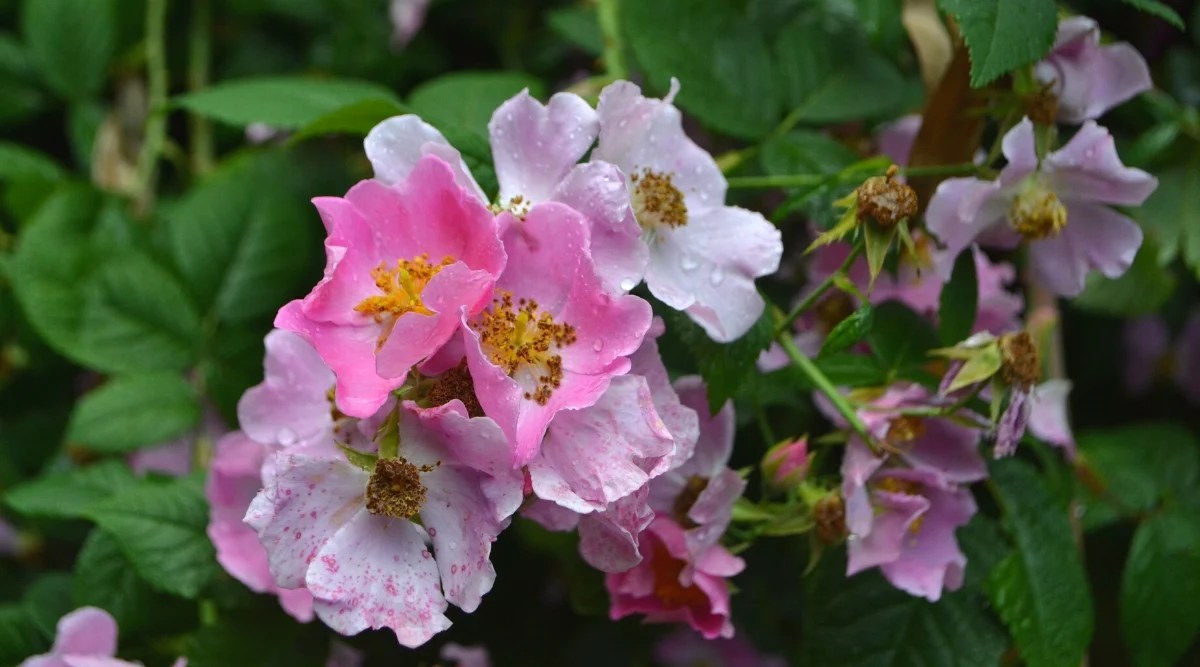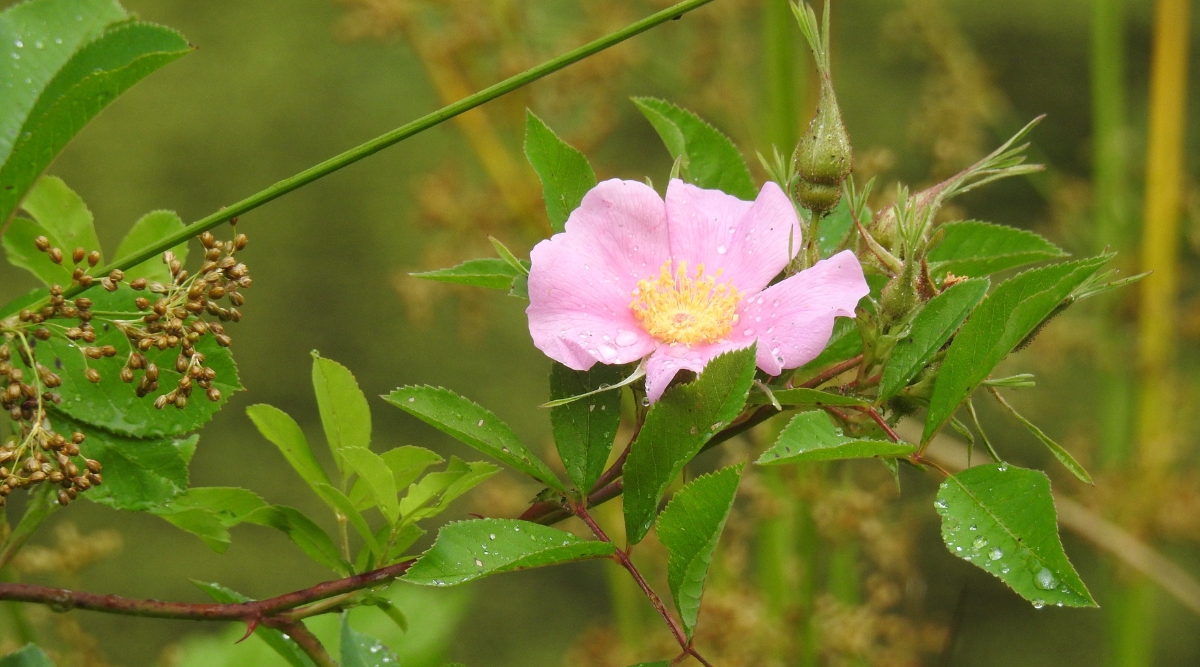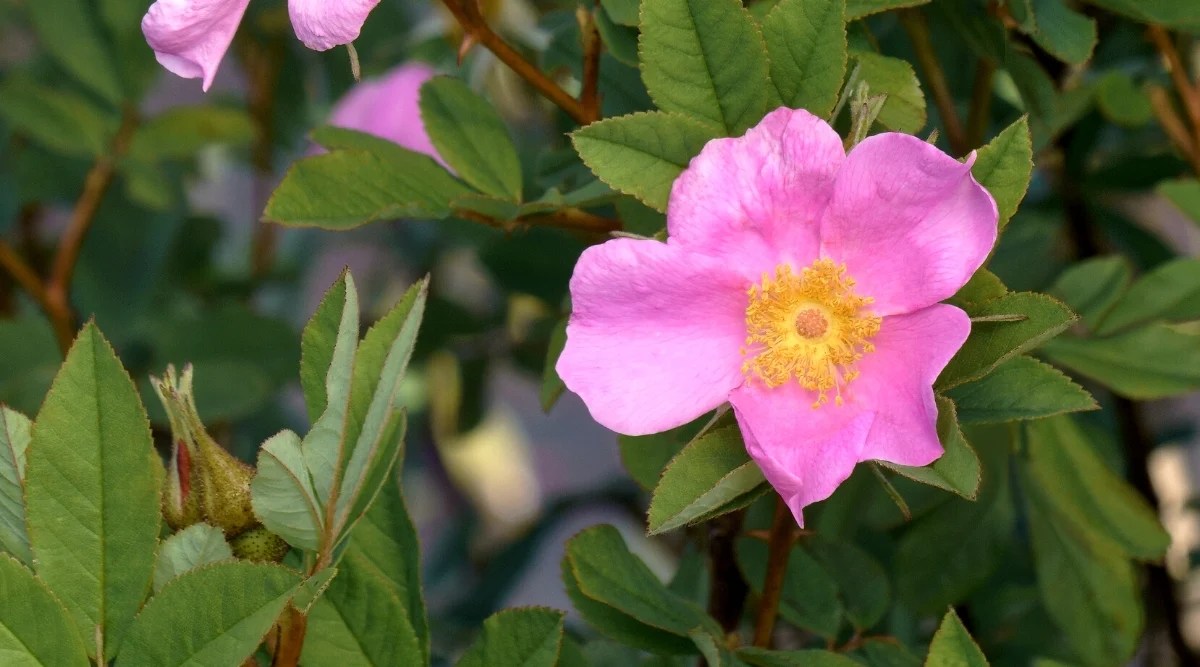peak
Do you need a garden that ’s both decorative and eco - favorable ? Wild rosebush are beautiful and provide essential habitat and food sources for wildlife . In this article , horticulture expert and rose partizan Danielle Sherwood shares 15 wild roses and the perks they offer your garden !
content

The news is out : Incorporating native plants in our gardens is apowerful way to sustain the ecosystem . be intimate yourexotic ornamental ? you’re able to still make an shock by mixing in species native to your area . Rose lovers can do their part by receive wild rosiness into their gardens .
Native coinage furnish critical habitat and nourishment for local fauna , economise piddle , and do n’t need chemical interventions to ride out hefty . Better yet , they are accommodate to fond tint and can flourish near big shrubs and trees . Here are15 dazzle wild rosesfor your timberland garden .
Why Wild Roses?
idle rosiness , also called species or aboriginal rose , are ideal for woodland gardens and large properties . Why should you plant these autochthonous mintage in your garden ?
If these perks sound invoke , you ’re quick for a woodland flower garden ! Remember that the mixed bag you prefer should be native to your location . This intend it thrives in your mood , making for a beautiful , low - maintenance plant that contributes to the health of your ecosystem .
Wild Roses for Your Garden
Which wild stand up is right for you ? Read on for a list of15 gorgeous North American aboriginal roses , with detail about each !
The Nootka Rose
First put down in the Nootka Sound of Vancouver Island , Rosa nutkana , or the ‘ Nootka Rose , ’ is native from Northern New Mexico to Alaska . It often grows along forest edges but stand many habitats , including moist shady soils and cheery , ironic meadows .
‘ Nootka ’ produces a jazzy showing of single - petaled mid - pinkish bloom in May through July , once in a while highlighted by white centers . The intensely fragrant prime appear separately and in bunch along long , arched stems with pretty hoary - green foliage .
Extremely cold - intrepid , ‘ Nootka ’ is unbothered by pesterer or disease . The foliage have gorgeous gloaming color . It ’s best known for its fertile red hip that decorate the shrub . The hipsprovide authoritative foragefor birds through the wintertime . Plus , they ’re a delicious ingredient for rose - season syrup and jelly .

Wood’s Rose
‘ Wood ’s Rose ’ is a adorable big bush aboriginal to the western United States and Canada . From late spring to midsummer , it shows off delicate single flowers in cluster of 2 - 4 blooms in pale lilac to bass raspberry .
ofttimes found at high elevation , Rosa woodsiihandles winters down to geographical zone 2 ( -50 ℉ ) , as well as spicy , desiccated summers . pollinator love its fragrance and opened grade with well approachable stamens .
In winter , ‘ Sir Henry Joseph Wood ’s Rose ’ has showy coral - red hips democratic with wildlife and beautiful in decor . Its reddish staunch add interest year - round . This uprise has stringy roots that uprise to form very dense coppice , reaching , on average , 6 feet grandiloquent .

‘Climbing Prairie Rose’
The only climbing rose native to North America , Rosa setigera , mean “ bristle - bearing rose , ” has a all-embracing range across the eastern and key United States and Canada .
From Mid - June to July , this scented crampon is decorate with 5 - petaled flowers in pale pink to deep rose , fading to blush over metre . It can stray up nearby trees and bush , or you may train it to rise a trellis . Alternatively , allow its long ( up to 12 groundwork ) fire sprawl along the ground , where they re - steady down to form new plant .
The foliage turn pretty orangey - red in fall . As a dioecious species , the ‘ Climbing Prairie Rose ’ needs the front of male and distaff flora to form hips . It is a host plant for several species of native moth . Feel innocent to give this one a heavy prune in late fall as bloom develop on new wood in spring .

‘Arctic Rose’
The ‘ Arctic Rose , ’ also called “ Prickly Wild Rose , ” grows wild in Canada , Alaska , and the Northern Great Plains . It has over-the-top stale leeway . The treat flowers are rosy - pink with a delicious honey - cinnamon scent .
Blooms seem in early summer . Later in the season , plants train gaudy tomato - cherry oval hip . Native Americans traditionally used the pelvic girdle as a vitamin - rich solid food informant .
With thin scarlet canes and finely - toothed foliage , this hardy pink wine has a delicate appearance . The foliage is sensational in gloam when it takes on a lush aureate chromaticity .

‘Swamp Rose’
unremarkably growing in mucky areas near ponds and lakes , the ‘ Swamp Rose ’ is a peachy plant for gardener fight with cockeyed , boggy soils or rainy climate . This variety stays slightly shorter at 6 human foot or less and efflorescence in early summertime with tripping danseuse - pink flowers .
The foliage turns ruby-red in the dip , and the shrub is covered in utterly round ruby pelvis . ‘ Swamp Rose ’ is softly fragrant and provides limited value to North American aboriginal bees .
This adaptable lulu stand sandy soils and occasional flooding . It prefers full sunshine for best blossoming but will get in partial shade .

‘California Wild Rose’
The ‘ California Wild Rose ’ produces blossom in varied shade from pallid rosiness to deep maroon . During modest winters , the bushy leaf stays evergreen .
aboriginal to coastal regions of California north through Oregon , Rosa californicaprefers moist land and can go dormant in times of drouth . After summer rosiness fade , Charles Edward Berry - like clustering of red hip steal the show .
unnerving hooked thorn help wildlife hide from predators and provide a safe place for hiss to nuzzle . A great thicket - former for erosion controller .

‘Dwarf Rose’
If the massive size of most native pink wine is intimidating , the low - growing ‘ Dwarf Rose ’ is a perfect second-stringer . It only reaches 2 to 3 feet in high spirits and does n’t have the overtop habit of its native relative .
Rosa gymnocarpa , mean “ naked blush wine , ” is so named for how the sepals overlook from the base of its bright red hips , leaving them unfinished at the end of the stem . This diffident aboriginal prefers partial shade but will develop in deeply shaded wooded areas .
The ‘ Dwarf Rose ’ has peck of woodland magical spell , with perfume small blooms in light pinko . Prominent golden stamens beckon the bee . Though small , it ’s a tough small rose and is known to bounce back after being munched by deer .

‘Pygmy Rose’
Often grow in the wooded understory of the Sierra Nevadas , tiny ‘ Pygmy Rose ’ is a little treasure for those who stumble upon it .
Only reaching 1 to 3 feet improbable , Rosa bridgesiihas rounded leaves and slightly cup pinkish blooms with detectable veining . Though rare , this wonderfully fragrant native has bang-up potential as a groundcover in a work garden .
‘ Pygmy Rose ” does well in dappled shade and moist territory . flower appear from betimes to midsummer and attract a variety of pollinators .

‘White Prairie Rose’
Now for the smallest of our native roses ! Cute , spreading ‘ White Prairie Rose ’ stays between 6 column inch to a foundation in superlative and up to 2 base wide . The undivided open blooms are white with blush center field and pink veining .
chiefly feel in Texas , Oklahoma , and Arkansas , Rosa foliolosalikes to develop in prairie and open woodlands with Lucius DuBignon Clay soils . It support up well to intense hotness .
Its Romance name intend “ profusely leaf , ” referring to its lot of 9 miniskirt - pamphlet . This darling rise has beautiful coloring and is the only white rose aboriginal to North America . small to no thorns make it even honeyed .

‘Smooth Rose’
discover for its thornless cane , ‘ Smooth Rose ’ has cryptical pink bloom with clean centers and bright yellow stamen . Its flower time is June to July , followed by plump , showy hips .
Rosa blandaspreads via suckers to spring a low - growing copse . It does best in culture medium to dry soils . It ’s gentle to care for , and is aperfect rise for beginners .
This variety await beautiful at forest boundary or hillside , providing reporting and color without obstruct the view . It attracts native bees and other pollinators .

‘Carolina Rose’
Rosa carolinagrows barbarian in a broad range of the United States and Canada . It ’s a good water - knowing garden industrial plant , as its strong taproot reaches deep into the soil for wet . This species is also foretell “ The Pasture Rose ” for its power to subsist in arid open meadows .
Attractivebright pink 2 - 3 in bloomsopen from May to June . In the autumn , the foliage turns an eye - get ardent bolshie .
‘ Carolina Rose ’ is one of the most widely available native rose wine . It does n’t get too grandiloquent ( 5 foot at the most ) but will diffuse .

‘Small-Leaved Rose’
This special state of nature ascend has a limited range ( it only develop in temperate coastal California ) , but those who can ascertain it chance on a uniquely beautiful phallus of the Rosa genus .
Rosa minutifoliais named for its endearing tiny ( ¼ inch ) burnished - unripe leave-taking . This California native has striking drouth tolerance and has been known to survive for up to 9 months without weewee ! It provides year - round of drinks sake with sweet pinkish blooms in spring through former summertime , red foliage in fall , and abundant globular pelvic arch in winter .
‘ Small - Leaved Rose ’ is now classify as endangered and is let rarer in reaction to the destruction of its native scrubland . The San Diego Botanic Gardens are working on multiplication and conservation effort .

Image Credit : Peter D. Tillman via Flickr(Image exercise allowed with ascription ) .
‘Virginia Rose’
Sometimes mix up with the ‘ Carolina Rose , ’ ‘ Virginia Rose ’ is a morsel taller , more robust , and prefers dampish soils . This is a peculiarly showy native rose with adorable deep pinko to fuschia flowers .
Rosa virginianahas a long bloom season ( up to 2 calendar month in mid - summer ) and serve as a worthful host plant life for several moth species . It forms natural hedges , which are favored as a hiding place for wildlife .
This mintage is equally beautiful when the flowers are spent , and its undimmed declension color kick in . A very garden - worthy variety for those who have the space !

‘Prairie Rose’
‘ Prairie Rose ’ grows across a wide belt of the United States and is often found in ironical eatage and sunny meadows . Its drought leeway urinate it idealistic for water - wise native gardens .
At only 2 to 4 feet marvellous and all-inclusive , Rosa arkansanais a doable native . It spreads via rhizomes and resists transplanting , so pick a blot before you plant where it can grow freely .
The open pinkish flowers have white centers and fade to the pallid blush in the sun . Its succulent foliage is a robust green in summer and bursts into blood-red - orange glory in autumn . Beloved by many wench and pollinators !

‘Shining Rose’
Called the ‘ Shining Rose ’ for its lustrous glossed foliage , Rosa nitidais find from Quebec to Connecticut . It prefers moist dirt and will sucker to form heavy Colony , a trait that do it a skillful ground cover choice .
The efflorescence are vivid reddish blue - pink and look in mid - bound atop heavily - uprise canes . The long , pointed leaf put on a showstopping fall performance of purple , white-livered , crimson , and Au .
Persimmon - like hips are enjoy by wildlife in the wintertime . This is a truly beautiful and versatile aboriginal with a fairly compendious habit . Some gardener even grow it in container !

Final Thoughts
you may grow beautiful rose while doing your part tosupport wildlife and a healthy ecosystem . With aboriginal roses , you get low - criminal maintenance garden plants that double as food and protection for pollinators and small mammals .
For the most welfare , take species that farm naturally in your region . These have coevolved with local vegetation and fauna and are already adapted to your mood ’s challenges . come up join the wild rose party ! Beautiful flush and biodiversity are heavy to beat .